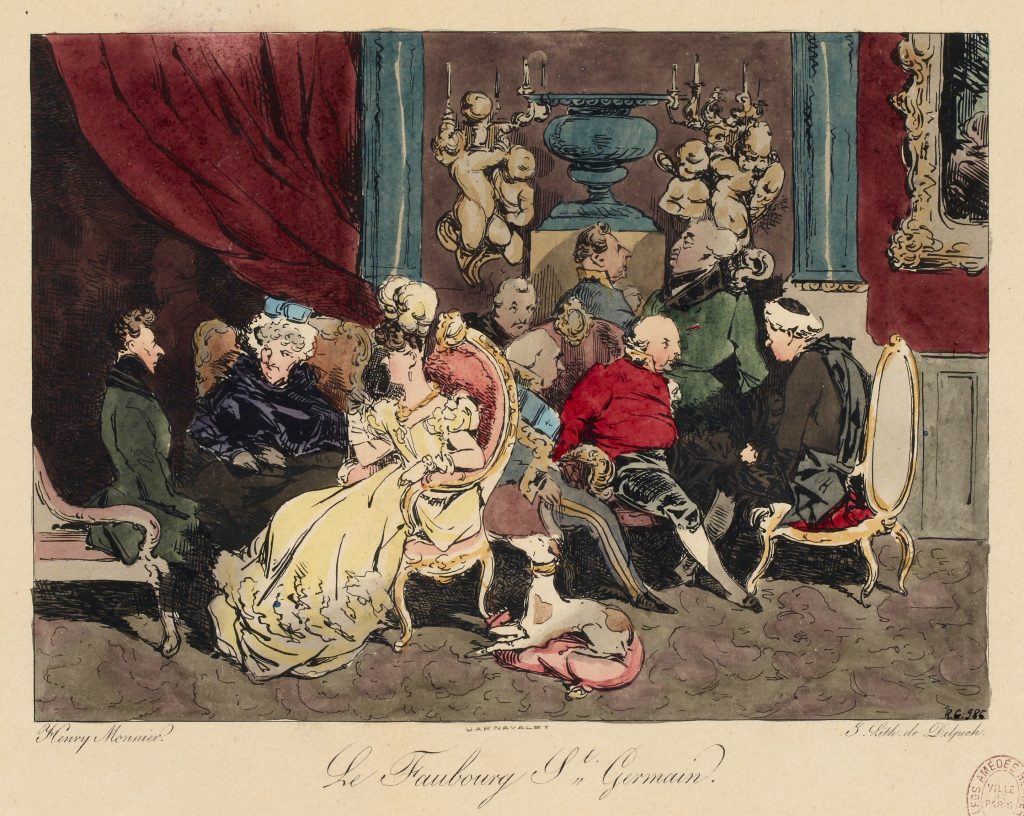
At the beginning of the 19th century, the Faubourg Saint-Germain designated less a district of Paris than it did the great families of French nobility left over from the Ancien Regime, who owned a majority of the vast and luxurious mansions that still today can be admired between the church of Saint-Germain-des-Près and the Champ de Mars. As novelists would have it, both ambitious young people and the newly wealthy alike dreamed of being admitted to this haloed circle of a glorious past, and which still possessed considerable power. While the aristocracy often welcomed artists into their salons, their doors remained barred to the nouveau riche class.
“Madame de Sommervieux had not yet seen any of the ancient and magnificent mansions of the Faubourg Saint-Germain. As she made her way through the stately corridors, the handsome staircases, the vast drawing-rooms—full of flowers, though it was in the depth of winter, and decorated with the taste peculiar to women born to opulence or to the elegant habits of the aristocracy, Augustine felt a terrible clutch at her heart; she coveted the secrets of an elegance of which she had never had an idea; she breathed in an air of grandeur which explained the attraction of the house for her husband. When she reached the private rooms of the Duchess she was filled with jealousy and a sort of despair, as she admired the luxurious arrangement of the furniture, the draperies and the hangings. Here, disorder was a grace, here luxury affected a certain contempt of splendour. The fragrance that floated in the warm air flattered the sense of smell without offending it. The accessories of the rooms were in harmony with a view, through plate-glass windows, of the lawns in a garden planted with evergreen trees. It was all bewitching, and the art of it was not perceptible.”
Balzac, La Maison du chat qui pelote, 1830 (translated by Clara Bell)

Monnier carefully records the social characteristics of these inhabitants of the Faubourg Saint-Germain. The aristocracy, proud of its lineage, retain their Louis XV period armchairs, and wear the styles of the Ancien Régime, including breeches tied below the knee over light-coloured stockings for men, and full dresses and hats for the women. Traditionally close to the Church, this society welcomed the clergy. Children were not admitted to these salons, but an elegant greyhound is permitted to recline on its cushion.

The reign of Napoleon witnessed the amassing of colossal fortunes and the creation of a new class of ‘Empire nobility’. These counts and dukes struggled to secure the legitimacy of their newly minted titles, purchasing private houses at vast expense in the Faubourg Saint-Germain to cosy up to the aristocracy of the Ancien Régime. The Beauharnais House, built at the beginning of the 18th century, was thus bought by Prince Eugène de Beauharnais, who modernised it to create one of the most stunning examples of the Style Directoire.